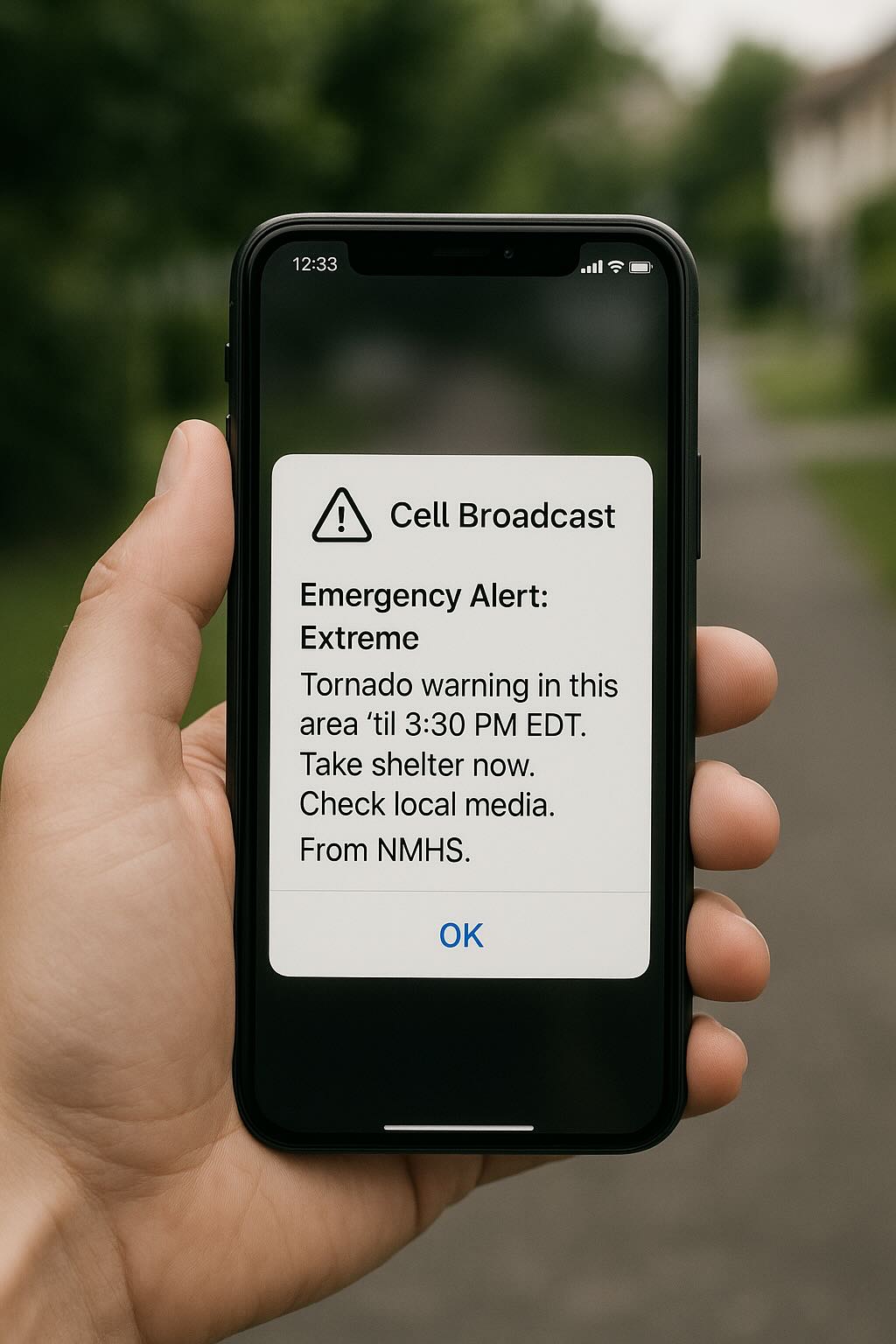As climate-driven hazards become more frequent and severe, timely and reliable early warnings are more critical than ever. Today, technological progress presents new opportunities to reach billions of people faster and more effectively, whether before, during, or after disasters.
Among the tools enabling this is cell broadcast, a proven technology that uses mobile networks to send short messages simultaneously to all mobile phones within a defined geographic area.  | With close to 98 per cent of the global population covered by mobile networks and 8 out of 10 people owning mobile phones (ITU Facts and Figures 2024), cell broadcast provides a reliable and effective channel to disseminate life-saving alerts rapidly and at scale.
Led by the International Telecommunication Union (ITU) under the South African Presidency of
the G20 Disaster Risk Reduction Working Group, this paper outlines the progress, barriers, and enabling mechanisms for advancing cell broadcast adoption, and highlights its role in strengthening national early warning systems.
Advancing cell broadcast adoption will help catalyze achievement of Early Warnings for All (EW4All) initiative's goal of ensuring that everyone on Earth is protected by an early warning system, with particular attention to vulnerable communities on the frontlines of climate and disaster risks. By increasing awareness and championing scalable financing, harmonized policies, and technology transfer, the G20 can play a catalytic role in accelerating the progress towards EW4All’s target.
|
This paper emphasizes cell broadcast implementation not merely as a technical measure, but as a practical pathway towards more inclusive, resilient, and coordinated early warning systems worldwide.
Key insights
Rate of adoption
Despite its recognized benefits and opportunities, cell broadcast adoption remains uneven, with
only about 45 countries—primarily high-income economies—having implemented or currently deploying cell broadcast systems for early warnings.
|
Barriers to adoption
Major barriers to wider cell broadcast adoption in countries include limited funding, low awareness and technical knowledge, insufficient institutional capacity, persistent infrastructure gaps (especially for low- and middle-income countries), and policy fragmentation and regulatory inertia.
|
Key enabling mechanisms
Supportive regulatory frameworks, cost-efficient deployment models, standardized protocols such as the
Common Alerting Protocol, and strategic international partnerships are key enablers for accelerating cell broadcast implementation.
|